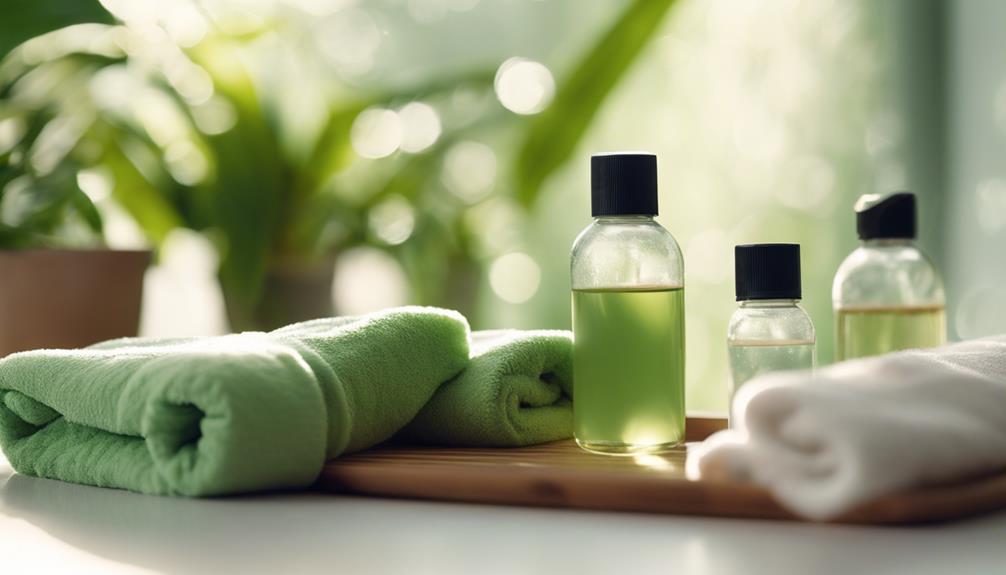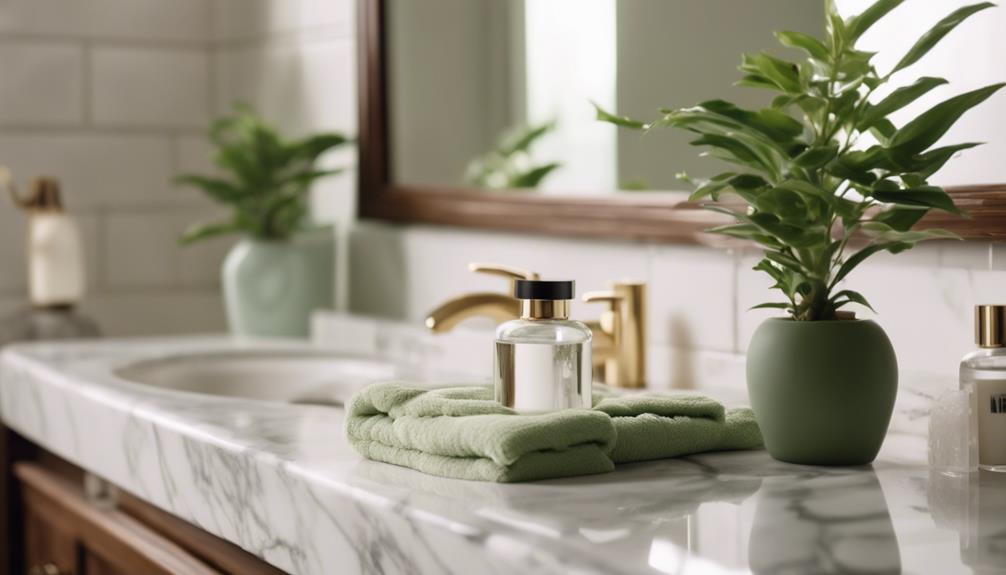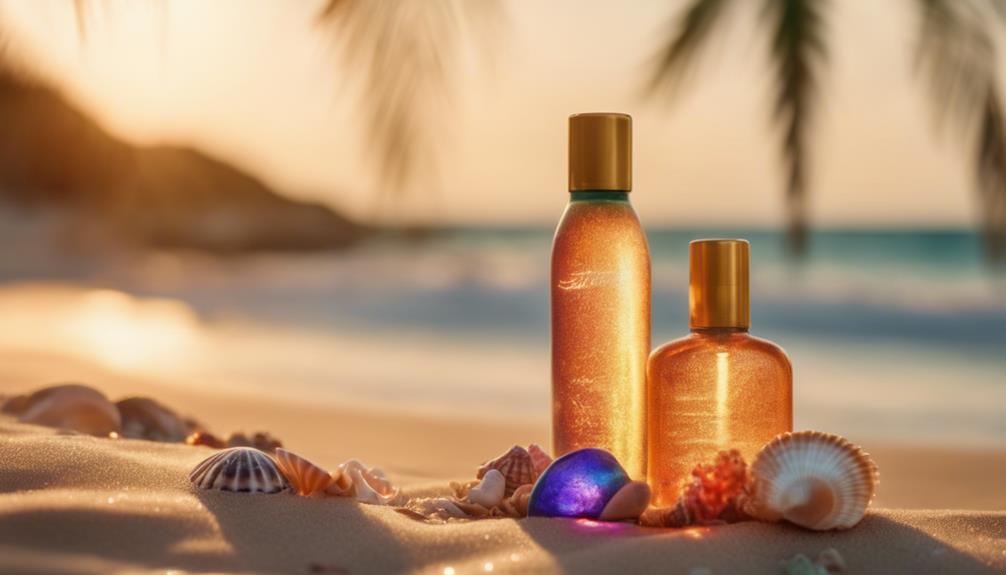To sanitize your tanning bed the eco-friendly way, use natural cleaners like a vinegar-water mix or hydrogen peroxide and water solution. These options are effective at eliminating germs without harsh chemicals. Regularly clean high-touch areas and consider using microfiber cloths to avoid scratches. Incorporate UV-C light sanitization for added protection. Guarantee good ventilation while you clean, and keep your cleaning routine consistent for the best results. Don't forget to monitor your impact and track what products you're using. Keep exploring to reveal more great strategies for maintaining a clean, green tanning environment!
Key Takeaways
- Use a vinegar and water solution to clean tanning beds, effectively sanitizing acrylic surfaces without harsh chemicals.
- Incorporate eco-friendly commercial cleaners that are non-toxic and biodegradable for a sustainable cleaning approach.
- Opt for microfiber cloths during cleaning to minimize scratches and reduce chemical exposure.
- Regularly sanitize tanning bed bulbs using natural solutions to maintain hygiene and eliminate germs.
Natural Cleaning Solutions
Regularly using natural cleaning solutions like vinegar, hydrogen peroxide, and lemon juice can effectively sanitize your tanning bed while being eco-friendly.
To create a vinegar-based cleaner, mix equal parts of white vinegar and water. This solution cleans and disinfects acrylic surfaces, leaving them fresh.
For a powerful cleaner, combine hydrogen peroxide with water, spray it on the bed, and wipe it down to eliminate germs.
Lemon juice also works well; mix it with water in a 1:1 ratio, spritz, and wipe for a clean finish.
For deeper cleaning, make a paste with baking soda and warm water, applying it to stubborn spots.
These natural solutions keep your tanning bed hygienic without harsh chemicals, ensuring a safe tanning experience.
Eco-Friendly Commercial Cleaners
Eco-friendly commercial cleaners offer a safe and effective way to maintain tanning beds while being gentle on both your skin and the environment. These products are designed using natural ingredients that kill germs without harsh chemicals, ensuring a hygienic space for your tanning sessions.
Many eco-friendly cleaners come in recyclable packaging, promoting sustainability and reducing waste. When selecting a cleaner, look for labels that emphasize non-toxic and biodegradable components.
You can also consider DIY solutions, such as mixing tea tree oil with water, which can provide additional antimicrobial benefits. By incorporating these eco-friendly options into your routine, you'll contribute to a healthier environment while keeping your tanning beds sanitized and ready for use.
Effective Cleaning Techniques
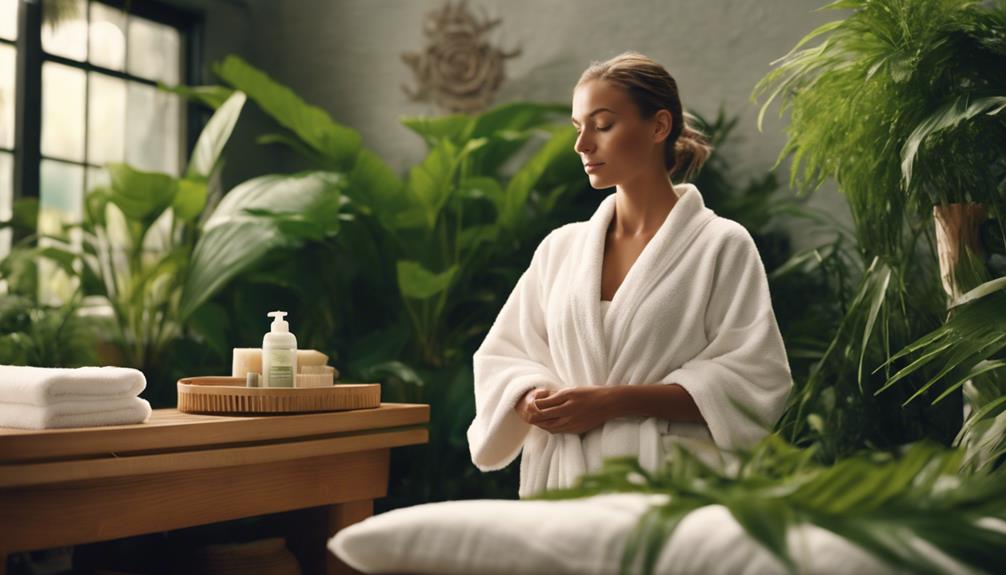
To maintain a spotless tanning bed, clean surfaces with microfiber cloths that prevent scratches while minimizing chemical exposure. Establish a daily cleaning routine focusing on high-touch areas like handles, knobs, and armrests.
For a deeper clean, unplug the tanning bed and use gentle, eco-friendly cleaners like vinegar or baking soda. Apply a paste of baking soda and warm water to remove grime, letting it sit for maximum effectiveness before wiping it away.
Guarantee proper ventilation during and after cleaning to disperse any fumes. Additionally, sanitize bulbs for thorough hygiene, as they can harbor germs.
Importance of Eye Protection
Maintaining a clean tanning bed is important, but protecting your eyes during sessions is equally essential for your safety and comfort.
UV exposure can harm your eyes, leading to discomfort or long-term damage. To guarantee you're adequately protected, consider the following tips:
- Choose goggles specifically designed for tanning beds, ensuring they've UV protection.
- Make sure your goggles fit snugly to prevent light leakage.
- Look for anti-fog features to maintain clear visibility throughout your session.
Skin Preparation Tips
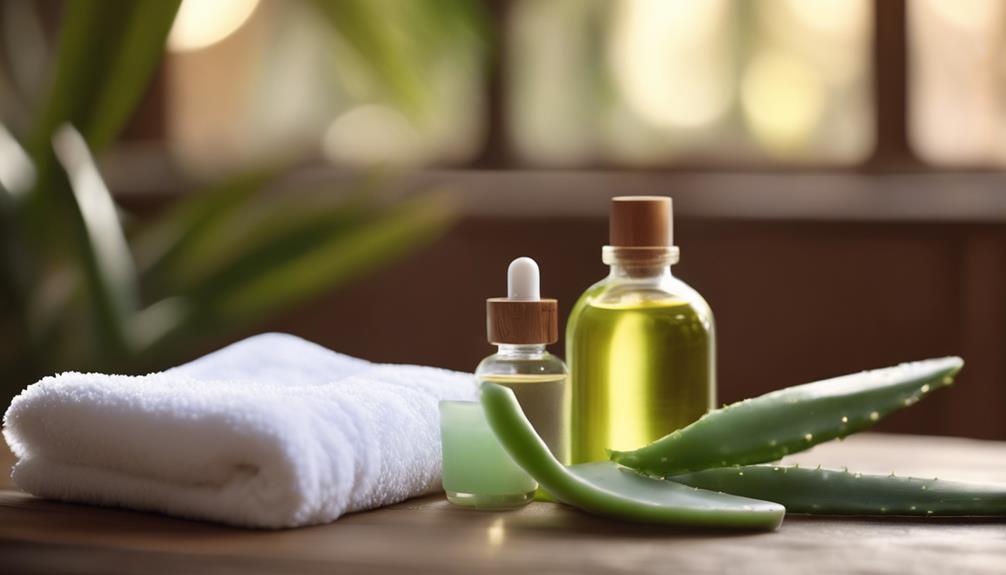
Preparing your skin properly before a tanning session can greatly enhance your results and keep your skin healthy.
Start by exfoliating your skin 24 hours in advance to remove dead skin cells, ensuring an even tan. Follow up with a good moisturizer to hydrate your skin, which can help the tanning product adhere better.
During your session, avoid heavy makeup and lotions, as these can create barriers that prevent even tanning. If you're trying new products, conduct patch tests to avoid any reactions.
Ultimately, don't forget to stay hydrated by drinking plenty of water, as this keeps your skin plump and radiant, giving you the best possible results from your tanning experience.
Sustainable Sanitization Practices
Implementing sustainable sanitization practices not only guarantees a clean tanning environment but also protects the planet. You can take simple steps to ascertain eco-friendly cleaning while maintaining hygiene. Here are some effective methods:
- Use vinegar and baking soda for a natural cleaning solution that fights germs without harsh chemicals.
- Incorporate UV-C light sanitization to eliminate bacteria and viruses effectively.
- Opt for reusable cleaning materials like microfiber cloths to minimize waste and reduce your environmental footprint.
Monitoring Environmental Impact
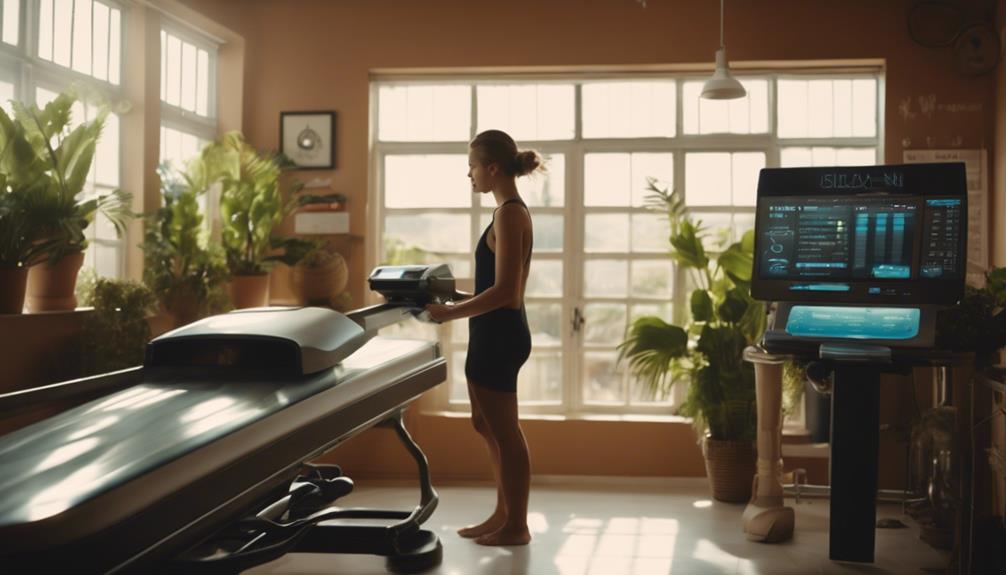
Regularly evaluating the environmental impact of your sanitization practices helps guarantee that your cleaning methods align with eco-friendly goals.
Start by tracking the types of cleaning products you use. Opt for natural or eco-friendly options to minimize harmful chemicals.
Assess your waste output from cleaning materials—reuse cloths and containers whenever possible.
Implement a feedback loop with your staff to gather insights on the effectiveness and sustainability of your practices. If you notice negative impacts, adjust your approach accordingly.
You should also stay informed about new eco-friendly products and techniques.
Frequently Asked Questions
How Often Should Tanning Beds Be Sanitized for Safety?
You should sanitize tanning beds after every use to guarantee safety. Regular cleaning prevents germ buildup, maintaining a hygienic environment for all users. Consistency is key in promoting health and enhancing the overall tanning experience.
Can I Use Essential Oils Directly on Tanning Bed Surfaces?
You shouldn't use essential oils directly on tanning bed surfaces, as they can damage the acrylic. Instead, dilute them in a cleaning solution for effective sanitization without risking the integrity of the tanning bed.
Are There Specific Brands of Eco-Friendly Cleaners Recommended?
While some cleaners contain harsh chemicals, others offer eco-friendly alternatives. You might consider brands like Seventh Generation or Method, which prioritize natural ingredients, ensuring effective cleaning without compromising your health or the environment.
What Are the Signs of Inadequate Tanning Bed Sanitation?
You'll notice signs of inadequate tanning bed sanitation if you see visible dirt or grime, unpleasant odors, skin irritations after use, or if the bed feels sticky. Regular checks can help maintain hygiene standards effectively.
Can I Use Homemade Cleaners on Commercial Tanning Beds?
When it comes to homemade cleaners on commercial tanning beds, you're walking a tightrope. Stick to gentle, natural solutions that won't damage the equipment, and always check manufacturer recommendations before using any DIY products.
Conclusion
By embracing these eco-friendly sanitization tips, you're not just keeping your tanning bed clean—you're nurturing your skin and the planet like a gardener tending to their blooming flowers.
Each natural solution you use and every conscious choice you make contributes to a healthier environment.
So, enjoy your tanning sessions guilt-free, knowing you're making a positive impact.
With a little effort, you can create a sparkling clean space that reflects your commitment to sustainability and well-being.
